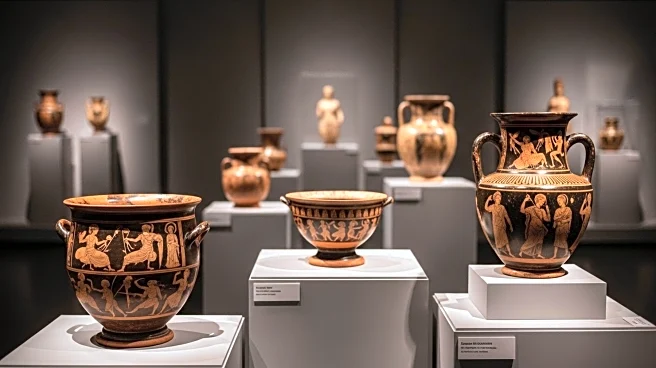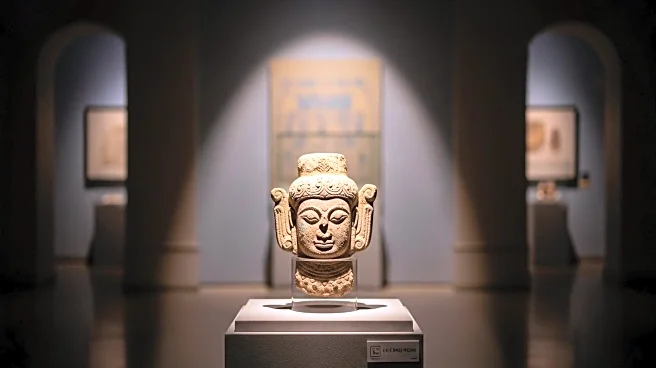What is the story about?
What's Happening?
The Manhattan District Attorney's office has returned 29 antiquities valued at $3 million to Greece, marking a significant repatriation effort. The artefacts were linked to trafficking networks involving smugglers Robin Symes and Eugene Alexander. Notable items include a bronze foot sculpture and a gorgon applique, both seized from the Metropolitan Museum of Art. The repatriation ceremony was held at the Consulate General of Greece in New York, emphasizing the importance of returning cultural heritage to its rightful home.
Why It's Important?
The repatriation of these antiquities underscores the ongoing efforts to combat illegal art trafficking and restore cultural heritage to its origin. It highlights the role of law enforcement and international cooperation in addressing art crime and preserving historical artefacts. The return of these items to Greece is a significant step in acknowledging the cultural and historical significance of these objects, promoting ethical practices in the art world. The case also raises awareness about the impact of art trafficking on cultural heritage and the importance of safeguarding it for future generations.
What's Next?
The successful repatriation may encourage further investigations into art trafficking networks and lead to more recoveries of stolen artefacts. Authorities may strengthen collaborations with international partners to enhance efforts in combating art crime. Museums and galleries might review their acquisition policies to ensure compliance with ethical standards and prevent the display of illicitly obtained items. The case could also prompt discussions about the responsibilities of cultural institutions in preserving and respecting cultural heritage.
Beyond the Headlines
The repatriation effort highlights broader issues of cultural heritage preservation and the ethical considerations involved in art collection and display. It raises questions about the responsibilities of collectors and institutions in ensuring the provenance of artefacts. The case may influence future policies and practices in the art world, emphasizing the importance of transparency and accountability in cultural heritage management.
AI Generated Content
Do you find this article useful?













